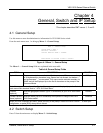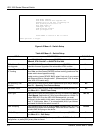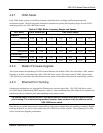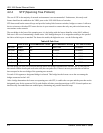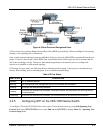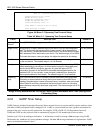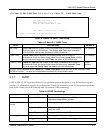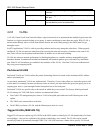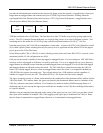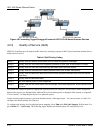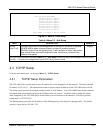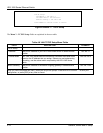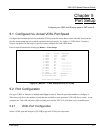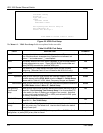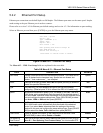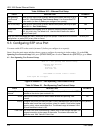
VES-1000 Series Ethernet Switch
General, Switch and IP Setup 4-9
provides the information that switches need to process the frame across the network. A tagged frame is four bytes
longer than an untagged frame and contains two bytes of TPID (Tag Protocol Identifier; residing within the
type/length field of the Ethernet frame) and two bytes of TCI (Tag Control Information; a tagged header starts
after the source address field of the Ethernet frame).
TPID has a defined value of 8100 (hex). The first three bits of the TCI define user priority (giving eight priority
levels). The CFI (Canonical Format Indicator) is a single-bit flag, always set to zero for Ethernet switches. The
remaining twelve bits define the VLAN ID, giving a possible maximum number of 4,096 (2
12
) VLANs.
Note that user priority and VLAN ID are independent of each other. A frame with VID (VLAN Identifier) of null
(0) is called a priority frame, meaning that only the priority level is significant and the default VID of the ingress
port is given as the VID of the frame.
Of the 4096 possible VIDs, a VID of 0 is used to identify priority frames and value 4095 (FFF) is reserved, so the
maximum possible VLAN configurations are 4,094.
Each port on the switch is capable of receiving tagged or untagged frames. You can configure a VES-1000 Series
switch to receive only tagged or all frames on a port-by-port basis. If it is set to tagged-only on a port, then only
tagged frames are allowed to enter from that port and untagged frames are dropped; if set to all, then both tagged
and untagged frames are allowed to enter the switch. The VES-1000 Series switch does not alter the VID of a
frame if it is already tagged; however, when an untagged frame enters the switch, it is assigned the default port
VID (PVID) of the ingress (incoming) port. Thus a frame always has a VID inside the switch, regardless of
whether it is tagged or not on the wire. The default PVID is 1 for all ports, but this can be changed.
The egress (outgoing) port(s) of a frame is determined on the combination of the destination MAC address and the
VID of the frame. For a unicast frame, the egress port based by the destination address must be a member of the
VID, also; otherwise, the frame is blocked. For a broadcast (or multicast without IGMP snooping) frame, it is
duplicated only on ports (except the ingress port itself) that are members of the VID, thus confining the broadcast
to a specific domain.
Whether to tag an outgoing frame depends on the setting of the egress port on a per VLAN, per port basis (recall
that a port can be members of multiple VID). If the tagging on the egress port is enabled for the VID of a frame,
then the frame is transmitted as a tagged frame; otherwise, it is transmitted as an untagged frame.
TPID
2 bytes
User Priority
3 bits
CFI
1 bit
VLAN ID
12 bits



